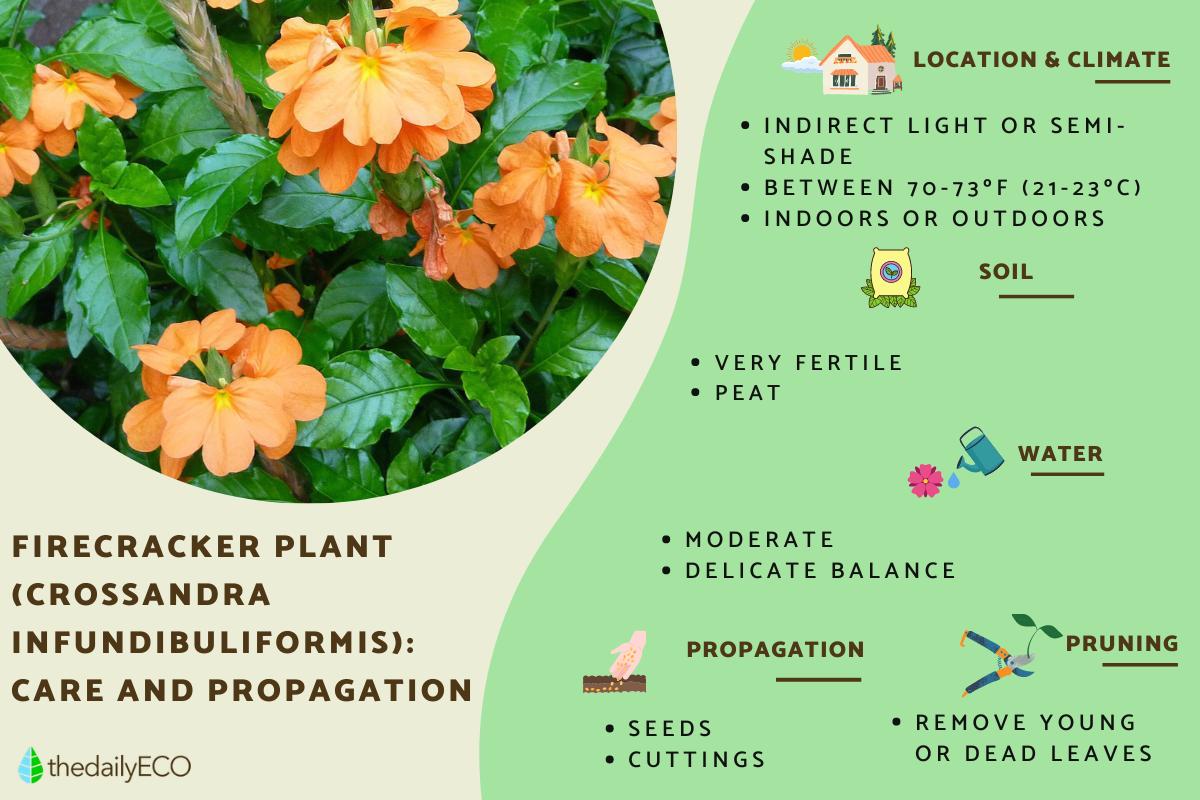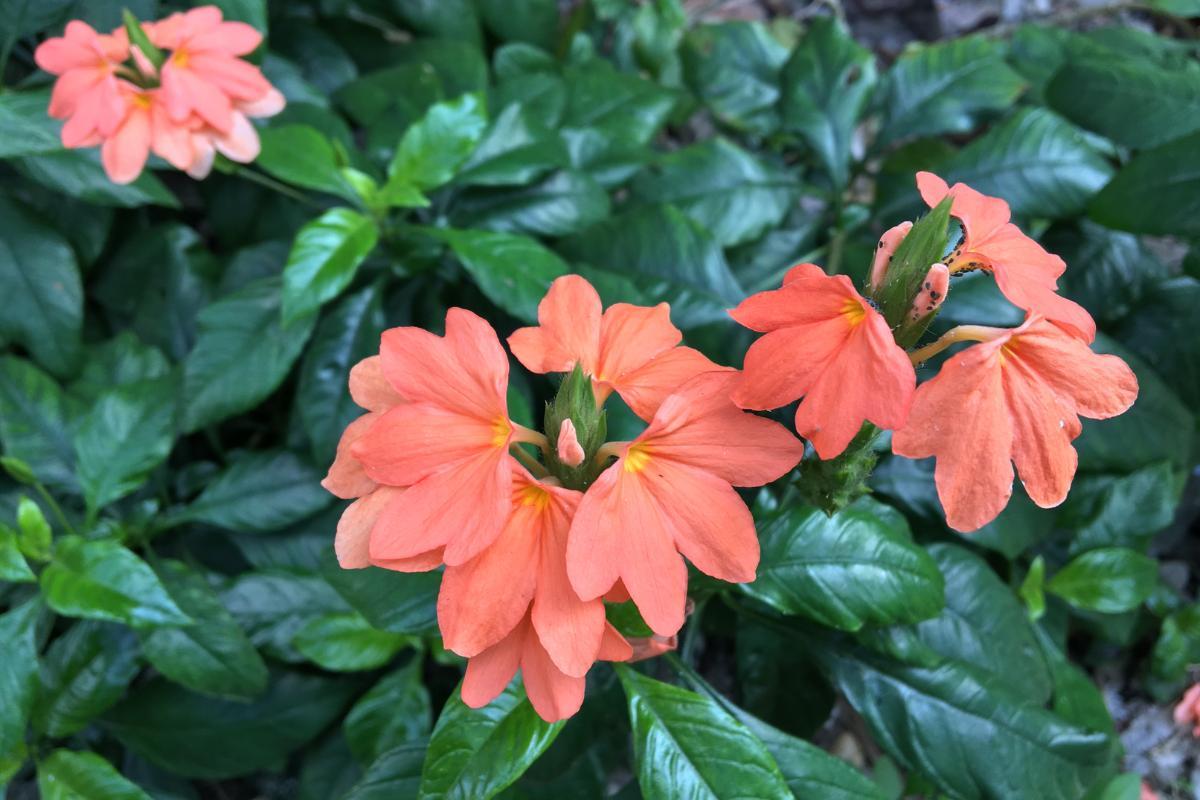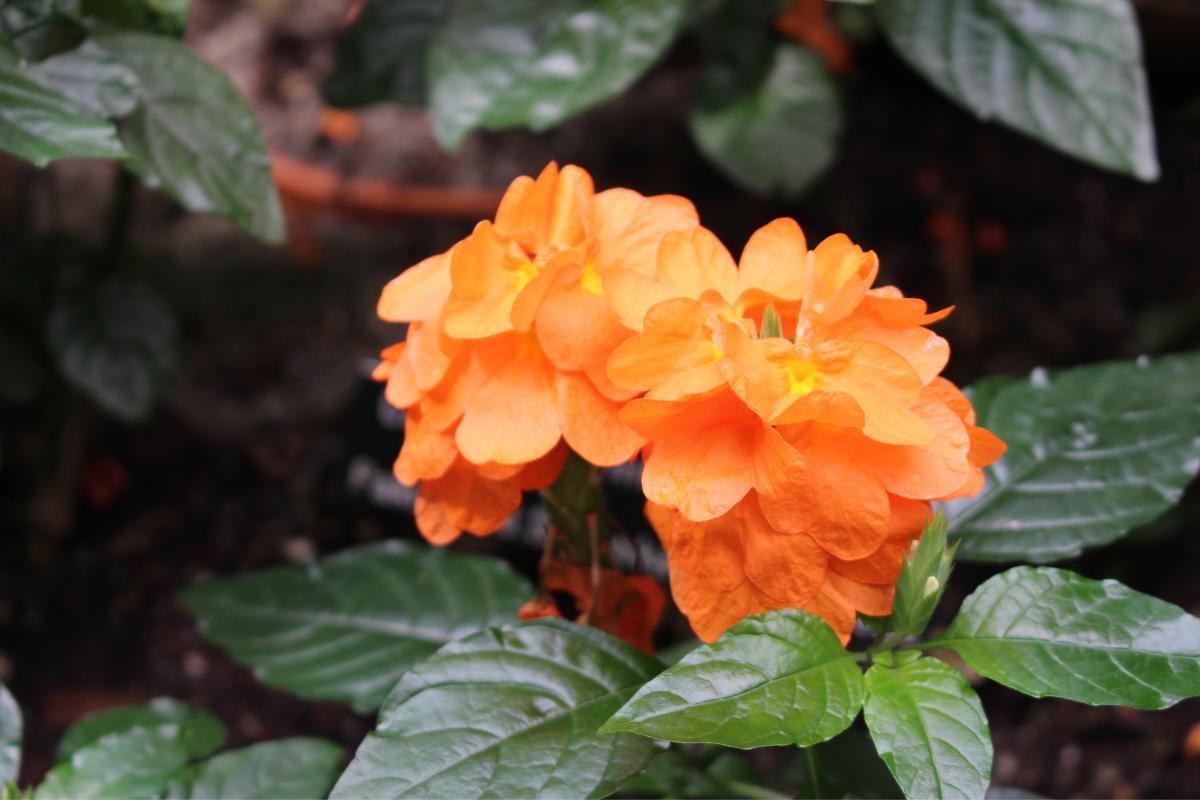Firecracker Plant Care Guide


The firecracker plant or firecracker flower is a flowering plant with the scientific name Crossandra infundibuliformis. Many plants of the Crossandra genus are known for their brightly colored flowers, but the firecracker plant is particularly well-known for its beautiful orange blooms which look like licks of flames sprouting from their green stems. It is a plant which required abundant light, but it should be indirect for most of the day. It can be grown indoors or outdoors and its propagation is by seeds or cuttings. Native to Inida, it is well adapted to other countries, but its need for warmth will determine where you can place it in your home or garden.
At thedailyECO, we provide a complete firecracker plant care guide. This helps you to know what soil to use, how much light it needs, how much water to give it, how to propgate your own plant and more.
Firecracker plant characteristics
The firecracker plant (Crossandra infundibuliformis) originates in India. It has adapted well to other countries with diverse climates, but those of us living in cooler climates may need to grow this plant indoors to better control its climate.
These plants are large and can sometimes look like shrubs, although they are not. They average 5 feet (1.5 m) in height and have dark green, veined leaves. They provide beautiful flowers that are almost always orange, although we can also find them in red or salmon colors. The inflorescence can measure 2.4" (6 cm) in length and they appear in spring or summer. The blooms of the firecracker flower are funnel-shaped and form beautiful bouquets.
Learn more about different plants with bell-shaped flowers in our related guide.

Firecracker plant light, temperature and location
The following needs to be taken into consideration when deciding where to place your firecracker plant:
- The firecracker plant requires a lot of light, but not direct sunlight. If it is under direct sunlight it will wilt, especially the flowers. When keeping the crossandra plant outdoors, it should not receive intense direct light. Although it is a tropical plant, it does well in some shade and indirect light.
- It does well in a warm temperature of between 69.8-73.4ºF (21-23ºC) and should not go below 53.6ºF (12ºC) as it cannot tolerate extreme cold or frost.
- The firecracker flower can be used both in the garden and indoors as an indoor plant. Keeping in a pot helps us to place it somewhere that receives a lot of light through the window, allowing us to best enjoy its beautiful flowers.
Learn more about the best partial-shade plants.
Soil and fertilizer for firecracker plants
When creating the substrate for your firecracker plant, you need the following:
- Soil: firecracker flowers need a very fertile substrate, which has been previously combined with peat. The soil pH can be neutral or slightly acidic.
- Fertilizer: we can use fertilizer formulated for azaleas, since it benefits firecracker plants equally. It can be given every fifteen days in spring and summer. The rest of the year, a small portion given once a month is enough. Another useful fertilizer is mineral fertilizer formulated for indoor plants, since it will provide the nutrients they need when not planted outside.

How much water do firecracker plants need?
We must be very careful not to overwater the firecracker plant, as it does not tolerate waterlogging. Even a little too much water will ruin the plant beyond recovery, especially in winter. You can usually water weekly, but this will be increased in the summer or during prolonged periods of heat.
Pruning firecracker plants
Pruning is only necessary when the plant is losing its shape. We can then cut off its younger branches and try to keep the older ones from becoming the shape we are giving our plant. Dry leaves are also pruned.
Learn more about when to prune plants with our article asking why are my plant leaves turning yellow?
Firecracker plant propagation
We can reproduce the firecracker flower in one of two ways:
- Seeds: propagating the firecracker by planting seeds should be done in spring when the weather is favorable. The seeds will start to grow about two weeks after we have sown them, continuing to grow somewhat irregularly for the next month. The plant will take some time to grow big and strong, about seven to nine months. After this time, it will begin to flower, although somewhat slowly and weakly the first time it does so.
- Cuttings: if you choose to take cuttings from firecracker plants, you will have to take great care of some important aspects. Firstly, we need to create the right conditions, meaning the atmosphere must be controlled to avoid sudden temperature changes that damage the growing seedling. Before putting the cuttings in a pot, you must ensure that the soil has been enriched with growth hormones, otherwise it will have a hard time growing at all. There must also be background heat, i.e. a tropical type environment without air currents and with light that is indirect but strong. For this reason, it is best to propagate firecracker plants in a greenhouse.

Firecracker plants diseases and plants
The following are common diseases and pests which affect firecracker plants:
- The most common disease that firecracker plants suffer is root rot caused by overwatering. This is why we must take great care that the substrate allows water to flow. The leaves should not even be moistened with a spray as this will also damage it.
- Despite the concern of waterlogging, insufficient watering is also a serious problem for firecracker plants. Once the plant has started to curl its leaves, it will be a sign that it is drying out. Firecracker plants are very sensitive and need precise watering, ensuring a balance depending on the climate in which it is planted. We will have to find this balance by experimenting and getting to know our individual plant.
- Of the pests common to firecracker plants, the red spider might is common. It is the greatest pest danger that it faces. This spider appears in times of heat and when the soil of the plant is very dry. We can get rid of this pest by ensuring the soil is constantly moist, but without overwatering it. We can also apply an arachnicide, which is sold in commercial garden centers.
Learn about the most common orchid diseases and pests with our related article.
If you want to read similar articles to Firecracker Plant Care Guide, we recommend you visit our Plant care and cultivation category.
- Halevy, A. H. (2019). Handbook of Flowering: Volume II. United Kingdom: CRC Press.
- Buttner, R. (2001). Mansfeld's Encyclopedia of Agricultural and Horticultural Crops: (Except Ornamentals). Germany: Springer.








